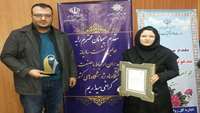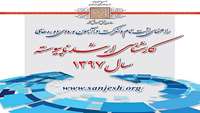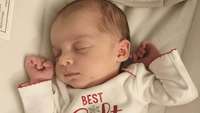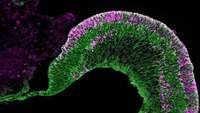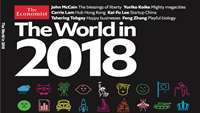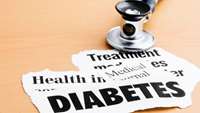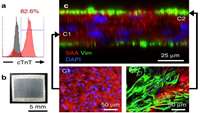Introducing the device of “ultra-centrifuge for separation of cell components” as the top project of the Vice-Presidency for science and technology affairs
According to the public relations and information center of the Vice-Presidency for science and technology affairs, the top projects of organizations were honored in the annual meeting of managers of communication between industry and universities and research centers of the country by the efforts of the office of communication with industry and ministry of science, research and technology.
The first student Olympiad of stem cell science and technologies and tissue engineering
The student Olympiad of stem cell science and technologies and tissue engineering will be held for the first time with the support of the council for stem cells science and technologies.
Woman gives birth to baby from embryo frozen 24 years ago
A baby has been born after becoming the longest-frozen embryo after being cryopreserved for 24 years.
Gene therapy for rare form of blindness wins US approval
U.S. health officials on Tuesday approved the nations first gene therapy for an inherited disease, a treatment that improves the sight of patients with a rare form of blindness. It marks another major advance for the emerging field of genetic medicine.
An Eye Organoid Approach Identifies Six3 Suppression of R-spondin 2 as a Critical Step in Mouse Neuroretina Differentiation
Recent advances in self-organizing, 3-dimensional tissue cultures of embryonic stem cells (ESCs) and induced pluripotent stem cells (iPSCs) provided an in vitro model that recapitulates many aspects of the in vivo developmental steps. Using Rax-GFP-expressing ESCs, newly generated Six3−/− iPSCs, and conditional null Six3delta/f;Rax-Cre ESCs, we identified Six3 repression of R-spondin 2 (Rspo2) as a required step during optic vesicle morphogenesis and neuroretina differentiation.
Study introduces new bioengineered asteroids for examining neural connections
Houston Methodist neuroscientist Robert Krencik, Ph.D., and his team have developed a new system to reduce the time it takes to grow these brain models, which will give them the ability to screen drugs and study whats behind disease-causing mutations more quickly.
The World in 2018 from The Economist highlights key global themes to watch for next year
The World in 2018, the annual publication from The Economist, predicts that 2018 will be a nerve-jangling year as people across the world attempt to escape the tensions of politics and the frenzies of technology.
The role of students in the domestic GDP will be highlighted by the establishment of the entrepreneurship ecosystem
According to the public relations and information center of the Vice-Presidency for science and technology affairs, Sorena Sattari, the vice president for science and technology affairs, regarded the development of the entrepreneurship ecosystem as the most important factor for returning the top talents and elites to the country in the opening ceremony of the “18th exhibition of research, technology and technomart achievements”. In this regard, he stated: the only strategy for returning top Iranian elites and talents, who are students or employees in other countries, is the establishment of an innovation and entrepreneurship ecosystem in the country.
ViaCyte bags $10M for diabetes cell therapies
ViaCyte picked up $10 million to fund the clinical development of its stem cell-derived treatment for patients who have Type 1 diabetes and are at risk of complications.
Cardiopatch platform enables maturation and scale-up of human pluripotent stem cell-derived engineered heart tissues
Despite increased use of human induced pluripotent stem cell-derived cardiomyocytes (hiPSC-CMs) for drug development and disease modeling studies, methods to generate large, functional heart tissues for human therapy are lacking.


